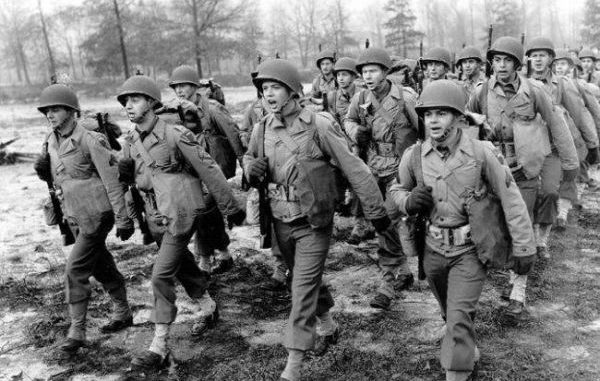
The head of the U.S. Fish & Wildlife Service declared in a news release that the “great game of hoarding” ammunition by “greedy individuals” was unsportsmanlike.
“I hope that all outdoor writers will make an appeal to good sportsmanship and fair play, and start a campaign to get local sports groups to collect these large ammunition stocks and redistribute them equitably,” he wrote.
During the current ammunition shortage, hoarding and speculation seem to be commonplace and sportsmen are frustrated, but the situation is not unprecedented.
In fact, the above federal official’s comments were made seventy years ago.
Soon after the U.S. entered World War II, the federal government began rationing food items, gasoline, tires — and even civilian ammunition — in order to make sure our military forces could be properly supplied. The War Production Board was responsible for regulating all manufacturing and converting the nation over to a war economy. Priorities were set, raw material allocated and the production of consumer goods severely restricted.
Ammunition quickly disappeared off store shelves as the WPB curtailed production of ammunition for civilian use. One year after Pearl Harbor, the nation’s domestic ammunition supply was just a sixth of normal levels.
“Shotgun ammunition is becoming a rare commodity everywhere, and in the areas where the hunters have been converging, the shells for 12- and 16-gauge guns have long been gobbled up. . . .” the Hutchinson, Kansas, News Herald, declared during the 1942 hunting season. “One of these days you won’t be able to get any (ammunition) unless you promise to use it on a Jap or a Nazi.”
The ammunition shortage worsened in 1943 when rationing was at its height. In Missouri, the Jefferson City News and Tribune reported that the near-record squirrel crop might go unharvested because there were no .22 bullets to be had. What little .22 ammunition that existed was being rationed to farmers for predator control.
“As a matter of fact,” the paper noted, “most retail dealers simply do not have any ammunition in stock and have been unable to get any.”
Louisiana was in a similar situation because shotgun shells were being sold only to farmers who needed them to shoot predators.
Federal officials promised there would be ammunition available for the hunting season, but the August 1943 issue of the Louisiana Conservationist claimed state authorities were receiving conflicting information as to how many shotgun shells would be released.
“Latest reports on the ammunition situation are to the effect the War Production Board is getting ready to make available 100 million shotgun shells to be allocated to the 48 states on information supplied by the federal fish and wildlife service on the estimated game population in each state,” the magazine wrote. “Then there is another report that shells are to be rationed on the basis of one box of shells for every person who has a 1942 hunting license, and the report further states that such person will have to present his hunting license to his dealer for notation before he can buy his shells.
“Reports from Washington state that the majority of shells to be made available will be for 12-gauge shotguns (mostly 4 and 6 shot). There will be some 16- and 20-gauge shells manufactured, it was said.”
That same month the San Antonio Light warned its readers that there might not be any ammunition for the Texas hunting season.
“Although the WPB has announced that ammunition will be released, the dealers generally appear to be about as trusting as the general public has learned to become of bureaucratic announcements of what is to be and what isn’t to be,” the papper announced. “Some dealers apparently cling to the hope there will be a pot of ammunition at the feet of the promissory rainbow, but most of them are frankly bearish.”
The WPB did not finalize its 1943 civilian ammunition policy until September. Rationing would be based on how much ammunition sportsmen already had on hand. Each person had to sign an affidavit stating he did not have in his possession more than 100 rounds of .22 rimfire ammunition, 20 rounds of centerfire ammo and 50 shotgun shells; he then could purchase 50 rounds of rifle ammunition and 25 shotgun shells.
Dealers were required to keep records of all sales.
The WPB used a quirky formula based on the number of hunting licenses issued, and the estimated population of game and predatory animals in each state to determine how much ammunition to distribute. Louisiana’s 1943 allotment was recommended to be 2 million shotgun shells and 25,000 rounds of rifle ammunition.
Northern deer hunters were dismayed to learn that the WPB refused to allow the production of any shotgun slugs. Many northern states only allowed deer hunters to use slugs, and the government’s ban did not bode well for the upcoming season.
New York’s conservation commissioner made a public appeal to hunters to share their ammunition because many families depended on wild game to supplement their meager food rations.
“Unless the more fortunate hunters are willing to release a few shells from their extra supply, hundreds of war workers throughout the state will be unable to participate in the game crop harvest at all this fall.”
Louisiana’s conservation commissioner, Joseph L. McHugh, echoed this sentiment.
“One thing is certain,” McHugh declared, “the amount of ammunition available to hunters for the coming season is going to be such that every hunter will have to use it carefully, and those who have stocked up large supplies should share them with others.”
The government ended ammunition rationing two months after Japan surrendered, but sportsmen continued to experience shortages.
“Production is increasing, but it will take some time to swing over to large scale output of civilian-type ammunition,” Mississippi’s Hattiesburg American announced on Oct. 31, 1945.
Today, the ammo industry is once again trying to catch up with demand. So be patient — history has shown us it could be worse.


